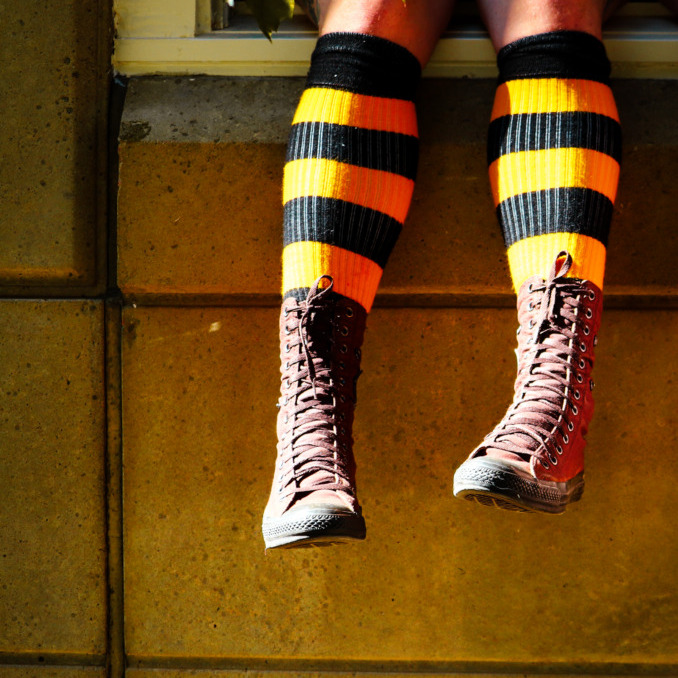
Sweatsuits are the new prep? How the look of privilege has evolved on college campuses
Students dress for the futures they want and the values they hope to embody — and it looks like the future is wearing sweatpants.
When I picture the quintessential university, I’m really picturing a style: ivy climbing the walls, crisp oxford button-downs, books carried like accessories. That style is prep, an aesthetic just as chock-full of privilege and aspiration as its campuses of origin.
Prep originally evolved as the style of students at American preparatory schools in the 1950s and ’60s, and when those students — who were primarily white, rich and male — moved on to Ivy League campuses, they brought their style with them. There, they defined the style with chinos, loafers and oxford button-downs, emulating their well-to-do fathers’ work attire.
Prep style reflected the aspirations of those students: privilege, wealth and success. So why, when we look around university campuses — places stuffed to the brim with privilege and aspiration — do we no longer see the polished prep of graduating classes past?
As white, preppy Ivy Leaguers codified their style, new cultural movements began to buffet their academic bubble. Increased financial aid for students and the civil rights movement diversified campuses. As demographics changed, campuses became the cradle of the new counterculture movements of the ’60s and ’70s. Suddenly, privilege was out, and rebelling against privilege was in. Students started dressing the part, wearing their opposition to tradition on their sleeves.
Just look at the evolution of university merch; long gone are the days of emblazoned blazers and pennants — symbols of the upper class. Now, most Dalhousie-branded clothes are hoodies, garments once made for athletes and blue collar workers, later adopted by graffiti artists, Rocky Balboa, and the hip-hop and skate scenes — styles today’s students increasingly choose to emulate.

People aren’t just wearing hoodies because they’re comfortable, they’re wearing them because — at least subconsciously — they want people to associate them with the values associated with those clothes. Clothes like hoodies represented hard work and authenticity, while traditional prep represents privilege and elitism. Looking around on campus today, it’s not hard to see what students want to represent.
Campus style has always been aspirational, but what we aspire to be — or at least look like — has changed dramatically. The days of campuses filled with rich white boys dressing like their rich white fathers are over. Campuses have become more diverse, and their stylistic cultures are now in direct opposition to the privilege they once overtly pushed.
Except those rich white boys, and other people with immense privilege, are still on campus, just now disguised in Carhartt pants and a Stüssy hoodie. This countercultural style is the new prep; it’s what students want to represent, while visually distancing themselves from the inherent privilege that comes with studying at a university.
Divorcing the aesthetics and realities of privilege does nothing to combat it. Nothing is confronted by people sticking their heads in the sand, pretending not to belong to a group if they don’t look the part. This just allows privilege and inequality to spread more rampantly and insidiously.
While classic prep still exists, the new prep for Dal students is athleisure, streetwear and workwear, alluding not to wealthy elites, but groups with cultural capital. Students dress for the futures they want and the values they hope to embody — and it looks like the future is wearing sweatpants.






